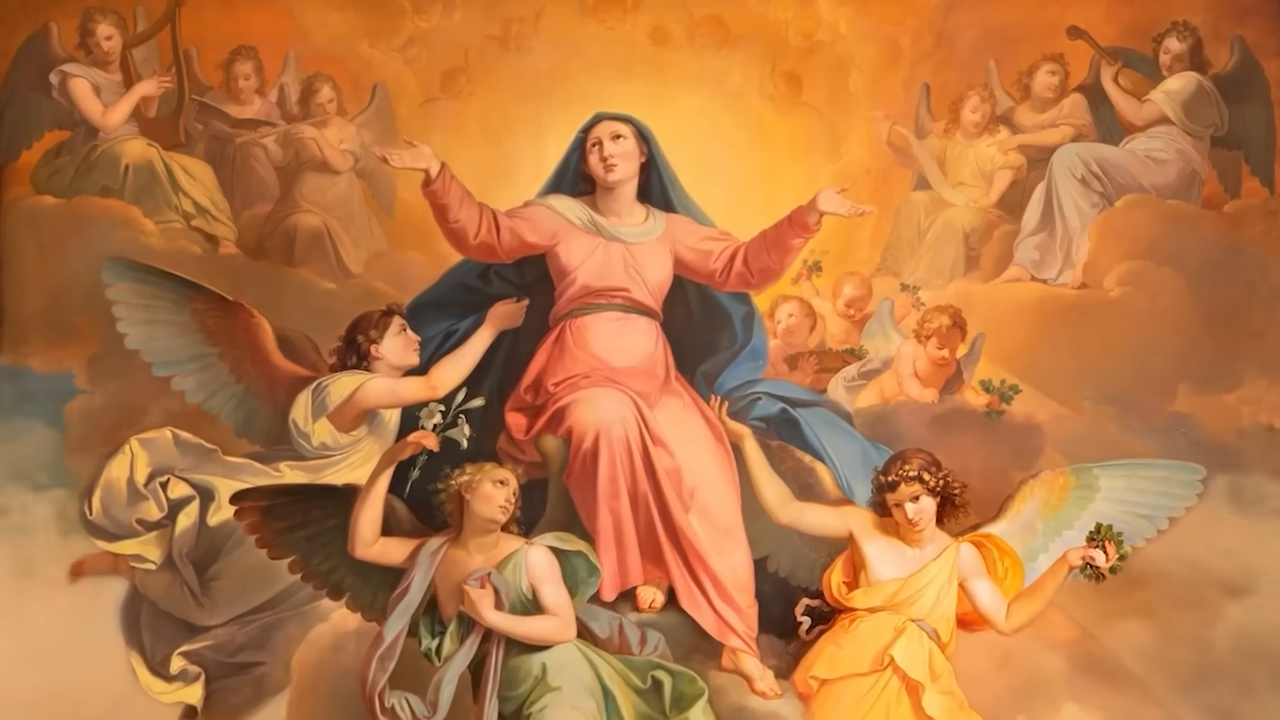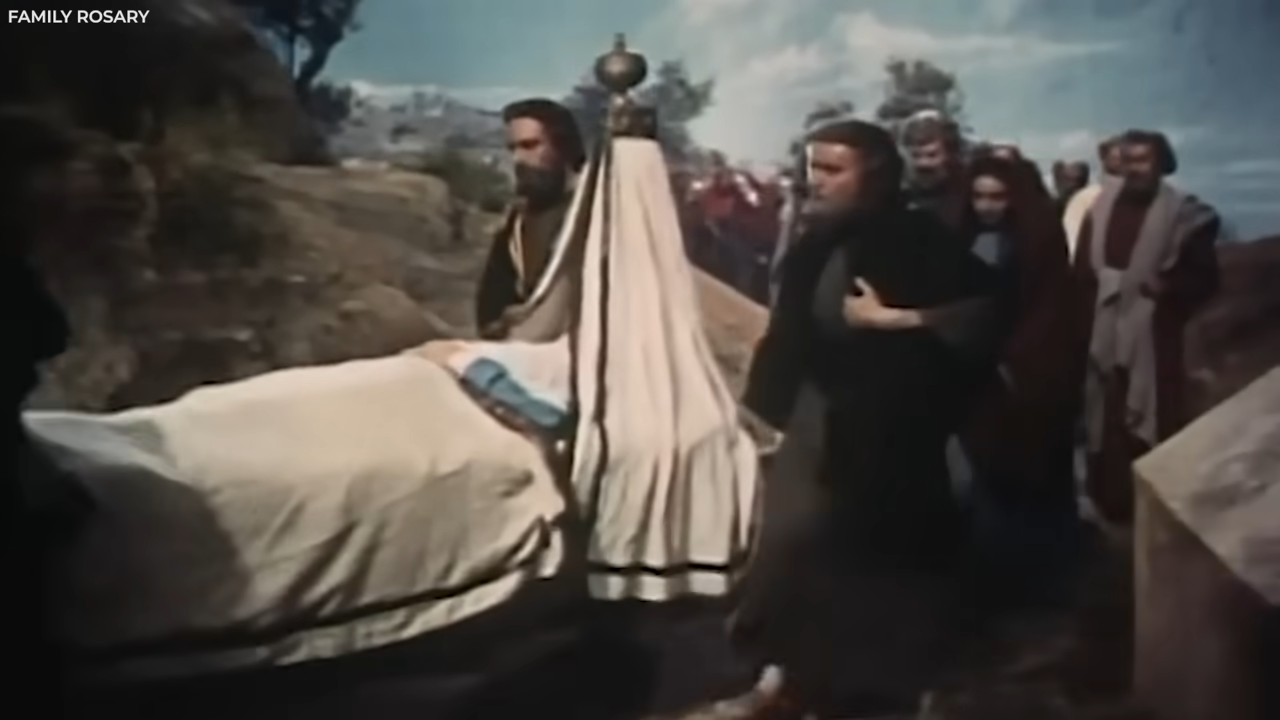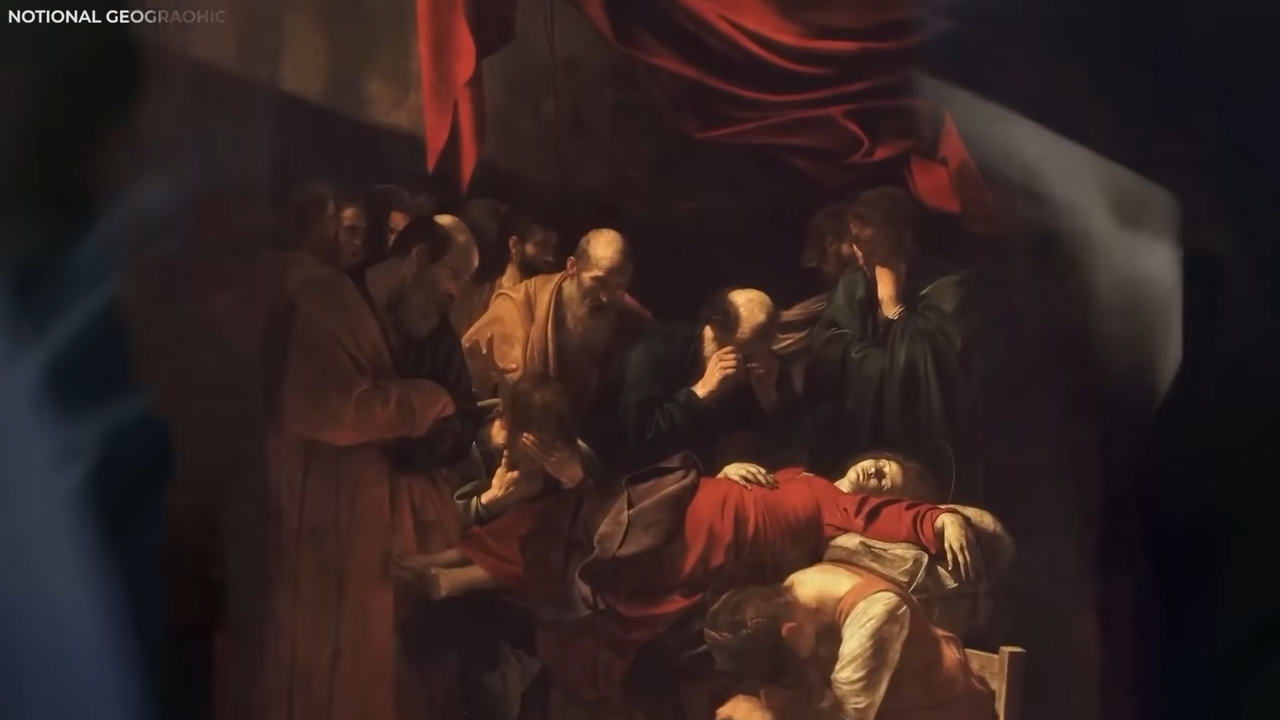For centuries, the mystery surrounding the Virgin Mary’s final resting place has captivated believers and scholars alike.

Throughout history, various traditions and religious texts have told differing accounts of how she left this world—some claiming she peacefully passed away, while others insisted she ascended to heaven without experiencing death at all. However, a recent discovery has reignited interest in this age-old question, as scientists have uncovered what they believe to be the tomb of the Virgin Mary, sealed for thousands of years.

The site of the tomb is in the Kidron Valley, near the Garden of Gethsemane and the Church of All Nations. Eastern Christians have long revered this tomb, believing it to be the final resting place of Mary, the mother of Jesus. The world awaited eagerly as the tomb, sealed for centuries, was finally opened.
To the astonishment of many, it was completely empty. This remarkable discovery seemed to support the Christian belief that Mary had been assumed into heaven, body and soul, leaving no physical remains behind. This doctrine, known as the Assumption, has been a core belief in Christianity, particularly among Catholics and Eastern Orthodox Christians, though interpretations differ.

The Catholic Church teaches that Mary never experienced death but was instead taken directly to heaven, while Eastern Orthodox Christians hold that she did die but was resurrected on the third day before ascending to heaven.
This belief was officially declared by Pope Pius XII in 1950 as dogma in a document called Munificentissimus Deus. This teaching is closely tied to the doctrine of the Immaculate Conception, which states that Mary was born without sin. According to Pope Pius XII, believing in the Assumption strengthens the faith of Christians in their own resurrection.

Interestingly, stories about Mary’s Assumption have existed since the early centuries of Christianity, with some dating back to the 7th century. One such story claims that the Apostle Thomas was absent when Mary passed away. Upon his return, he requested to see her body.
When the tomb was opened, her body was gone, leaving only her burial clothes. According to some variations of the story, Mary even dropped her belt from heaven as proof of her ascension. These narratives have been depicted in Christian art throughout history, solidifying the belief in the Assumption.
The origins of these stories can be traced to ancient Christian texts, some of which are not included in the modern Bible. Scholars believe that Jewish Christians in Jerusalem shared oral traditions about Mary’s final days, which were later written down. However, historian Stephen J.
Shoemaker points out that these stories vary significantly and do not stem from a single tradition. Instead, they evolved over time, influenced by different cultures and theological perspectives. Interestingly, the New Testament itself does not provide any details on Mary’s death, leaving much room for speculation.

One of the earliest references to Mary’s departure from this world comes from the writings of Epiphanius of Salamis in the 4th century. Even he admitted that there was no clear or reliable tradition regarding what happened to her. He noted that some people believed she died peacefully, others thought she was martyred, while others maintained that she never died at all. Over time, different Christian traditions adopted their own versions of the story, shaping the beliefs we see today.
By the 8th century, the belief in Mary’s Assumption had become widespread, and figures like John of Damascus wrote about the apostles discovering her empty tomb. The Feast of the Assumption began to be celebrated as early as the 5th century and was formally recognized by Emperor Maurice around the year 600. The Western Church eventually adopted the celebration as well, and over the centuries, it gained more importance in Catholic traditions.
However, the question of where Mary’s tomb was located remained a subject of debate. Some traditions claim that her tomb is in Ephesus, Turkey. According to these accounts, Mary lived her final years there with the Apostle John, who was entrusted with her care by Jesus himself. The first church dedicated to Mary was built in Ephesus, further strengthening the belief that she had lived there. In the 19th century, the visions of a German nun, Anne Catherine Emmerich, led explorers to a house in Ephesus that matched her descriptions of Mary’s last home. When archaeologists examined the site, they discovered foundations dating back to the 1st and 4th centuries, adding to the intrigue.
Other traditions place Mary’s tomb in locations as distant as India and Turkmenistan. A group known as the Nestorians believed she was buried in a town called Mari in Turkmenistan, while some Christians in Northern Iraq claimed her tomb was near Erbil. The Ahmadiyya Muslim community asserts that she was buried in a town called Murree in Pakistan. These claims, though not widely accepted by mainstream Christian groups, illustrate the global reach and enduring mystery of Mary’s final days.
Islam also has its own perspective on Mary’s fate. According to Islamic tradition, the Prophet Muhammad encountered Mary during his miraculous night journey to Jerusalem and heaven. He saw her near the Throne of God, surrounded by angels. Mary is highly revered in Islam, where she is considered one of the most virtuous women in history. The Quran frequently mentions her, emphasizing her purity and devotion to God.
The Assumption of Mary remains a significant religious observance for many Christian communities around the world. Orthodox Christians honor the event with a 14-day fasting period leading up to the Feast of the Dormition on August 15. Catholics celebrate the Assumption on the same day, with major festivities in countries such as France, Italy, and Spain. In Malta, the event is a public holiday, while in Guatemala, it is celebrated as a patronal feast.
Despite the many interpretations and traditions surrounding Mary’s Assumption, the recent discovery of her empty tomb in the Kidron Valley has only deepened the mystery. Was she truly assumed into heaven, leaving behind no remains? Or did she live her final days in Ephesus, as some accounts suggest? While definitive answers may never be found, the enduring devotion to Mary across different cultures and religions is a testament to her profound impact on faith and history.
As new discoveries emerge, the conversation surrounding the Virgin Mary’s Assumption will undoubtedly continue, inspiring believers and historians alike to seek the truth behind one of Christianity’s greatest mysteries.


